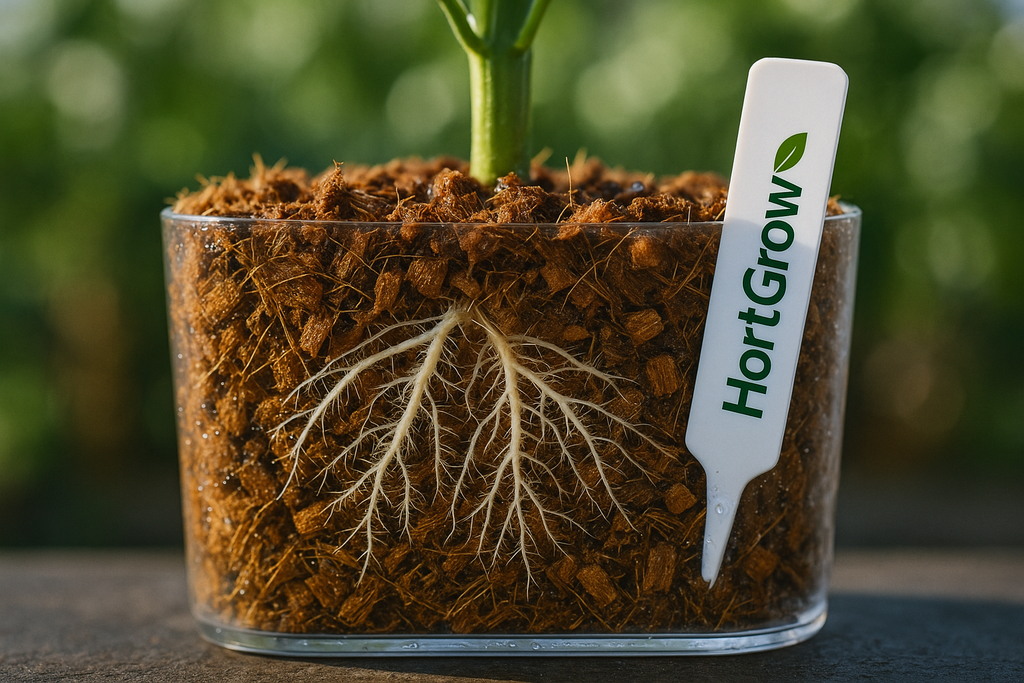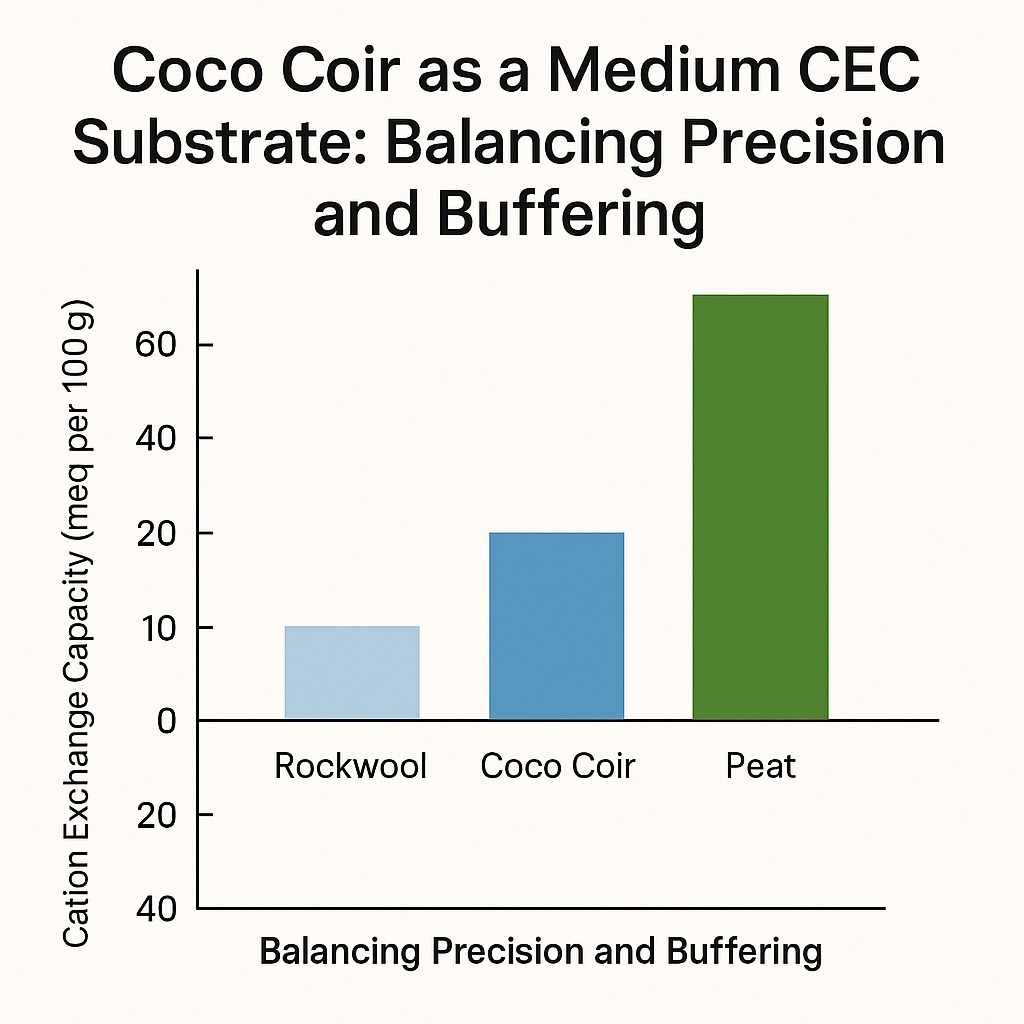Coco Coir as a Medium-CEC Substrate: Balancing Precision and Buffering
Selecting the right substrate is fundamental to crop success. Beyond physical properties such as water holding and porosity, the chemical behavior of a substrate determines how nutrients are stored, exchanged, and delivered to plants. A central property in this context is cation exchange capacity (CEC), which is the measure of how many positively charged ions a medium can adsorb and release.
CEC is quantified as milliequivalents of charge per 100 grams of dry medium (meq per 100 g, or cmolc per kg). Values vary widely. Mineral soils may exceed 100 meq per 100 g depending on clay and organic matter content, while inert substrates such as rockwool approach zero. Coco coir generally ranges between 10 and 30 meq per 100 g, placing it in a middle ground that creates distinctive advantages for fertigation based horticulture.
Low-CEC substrates: Rockwool
Rockwool and similar inert materials provide almost no cation exchange. Nutrients move freely with the irrigation solution and plant uptake reflects fertigation inputs almost immediately. This enables precise crop steering but offers no buffer against error. A missed irrigation or slight mixing mistake can stress plants quickly because the substrate contributes nothing to nutrient supply.
High-CEC substrates: Peat and heavy soils
Sphagnum peat moss and mineral soils sit at the other extreme. With CEC values often exceeding 100 meq per 100g, they retain large pools of calcium, magnesium, potassium, and ammonium. This reservoir protects against short term interruptions but also resists rapid change. Shifting a fertigation strategy may take weeks to show results in the crop as cations remain tightly bound. Imbalances, such as potassium outcompeting calcium and magnesium, can accumulate unnoticed until deficiency symptoms appear.
Coco coir: The middle ground
Coco coir’s medium CEC of 10 to 30 meq per 100 g offers both buffering and responsiveness. Calcium and magnesium are retained without being locked away, while potassium and ammonium remain exchangeable. Coir also tends to accumulate slightly more potassium and phosphorus than rockwool, but not to levels that prevent steering.
This best of both worlds profile means coco can absorb minor fertigation inconsistencies yet still allow rapid shifts between vegetative and generative steering. Unlike peat or soil, adjustments in fertigation recipes show up within days rather than weeks, giving growers more control with less risk.
|
Substrate Type |
Typical CEC (cmolc per kg or meq per 100 g) |
Nutrient Dynamics |
Crop Steering Response |
Risk and Resilience Profile |
|
Rockwool (inert) |
~0 |
No retention of cations; plants see only what fertigation delivers |
Very rapid; changes in hours |
High precision but no buffer, any fertigation error quickly stresses plants |
|
Coco coir (medium CEC) |
10–30 |
Retains Ca²⁺ and Mg²⁺ moderately; K⁺ and NH₄⁺ remain exchangeable; P held slightly better than in rockwool |
Responsive in days; allows both vegetative and generative steering |
Forgiving against small fertigation gaps yet agile enough for precision programs |
|
Peat moss or heavy soils (high CEC) |
100–200+ |
Large nutrient reservoir; strong binding of cations; prone to K–Ca–Mg imbalance |
Slow, steering can take weeks to manifest |
Very stable but hard to correct imbalances, risk of nutrient lock up |
Practical management
The advantages of coco are only realized when properly prepared. High quality coir must be thoroughly washed and buffered with calcium nitrate to displace excess sodium and potassium from exchange sites. Once in production, maintaining balanced fertigation is critical. Over supplying potassium, for example, can crowd out calcium and magnesium, leading to deficiencies. Monitoring leachate electrical conductivity (EC) and pH remains essential, as root zone acid base shifts are also influenced by the cation to anion balance of plant uptake.
Conclusion
Rockwool offers speed and precision but no forgiveness. Peat and soils provide buffering but resist rapid steering. Coco coir, with its medium CEC of roughly 10 to 30 meq per 100 g, provides the best of both worlds. It buffers enough to stabilize the root zone, yet remains responsive to modern fertigation strategies. For high value crops where both flexibility and resilience matter, coco provides a functional middle ground that is difficult to replicate with either extreme.





